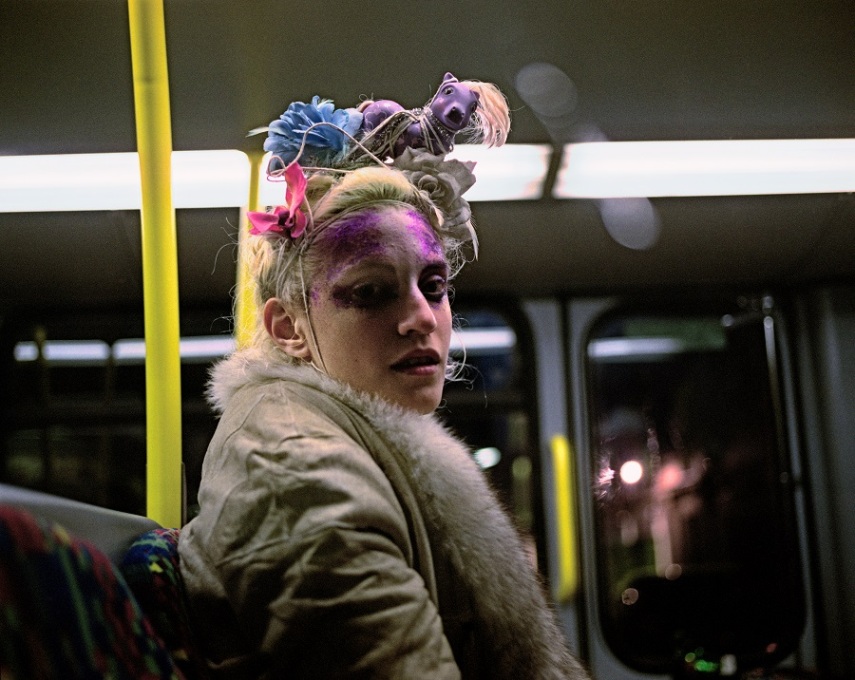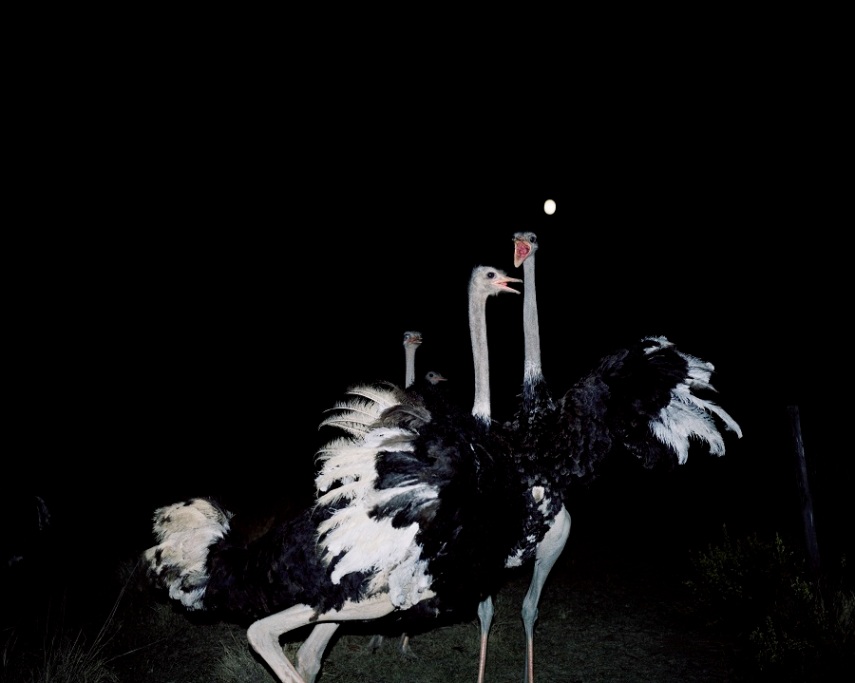AUTHOR: IVO MARTINS
EDITION: (Exhibition Leaflet) Centro Cultural Vila Flor DATE: March 2018
Deleuze explored the analogy between thinking and the concept of the rhizome -reflecting on how each manifests itself and interacts with the world: "How can thought shake off its model, make its grass grow—even locally, even at the margins, imperceptibly"?
Photographs alter the observer’s material surroundings, and adapt them to the observer’s subjective constructions, while freeing him from any constraints or submissions. However, after the initial surprise, a sense of unpleasantness and regression re-impose their norms. To encourage the salutary progress of the imagination, people try to find rare, fragile and ephemeral moments in photographs, subtracted from the arrogance of the present and the evidence of the here-and-now - in the immediate present, in which everything is absorbed and dominated. People advance towards the end of their personal history, heralded by the inevitable hour of death. Photographs reveal to the observer how difficult it is to change places, even when everything is in motion, because that which is being observed has no specific place. The recorded image lives in a no-man’s land, a global geographical zone, without latitude, longitude or altitude, embodying the modern function of the ruin, in which post-ideological man is destroyed, in an inglorious attack against the force of the present. The past has been shortened, and brought closer to the immediate here-and-now. The present has become the direct communication of all things. As a result of the speed of communication the future now occurs at the same time as the present. In short, there is more present in each moment in time, and the images captured by this photographer emphasize the importance of slower movements of the gaze. Contemplation and delay are incompatible with the sentiment of the global devastation caused by awareness of a lost past, caused by the disappearance of customs. Hegel once said that customs – Sittlichkeit - form a dense set of unwritten social norms, that constitute a thick and impenetrable ethical substance which shapes doing and not doing things. Today, those standards have vanished and that which couldn’t be said two decades ago, can now be shamelessly advocated.
The idea underpinning each image moves like the roots of a rhizome, a model of interweaving and dispersed construction, essentially horizontal and expansive, that creeps underground, into an invisible network of end-points. The roots explore the same light of knowledge cast by the great tree, always exposed to the luminosity of the sun, using indirect chromatic synergies. Through minute subterranean impulses, the rhizome incessantly expands, ever flexible and adaptable, forming uncertain and obscure connections, as bridges for new interpretive solutions. The ambiguities and ambivalences resulting from this web of incessant ramifications create shortcuts and alternatives, encouraging the observer to take risks, in interpretations based on visions of a probabilistic, random, quantum, infinite nature ...
Each work has a history constituted by movements across territories, peoples and countries. Moments are the encounters of someone’s gaze, who does not fear compromises and makes decisions frontally. The images in André Príncipe's photographs reveal a reflexive triad, constituted by remembrance, evocation and reminiscence. They must be perceived beyond their formal and thematic limits, intersecting the artist’s ways of seeing, with the stimuli triggered by places beyond him. The set of works presented in this exhibition must be viewed as a unified and comprehensive whole, representing a sinuous and personal line of thought - an idiosyncratic vision that exudes and absorbs multiple visual elements from different sources.
With the André Príncipe exhibition, the Centro Cultural Vila Flor intends to reveal an oeuvre that is inexplicably less well known than it merits to be. Presentation of these photographic images reopens a small dystopic window, symbolized by the hopeful cluster of moments retrieved from prolonged journeys through different cultures, as elements of freedom or flashes of joy. However, it is necessary to be frontal, which implies not hiding the truth. Life is tragic. But in spite of all its misfortunes, it’s possible to experience a certain joie de vivre. The works on display, represented in the immanent light of a constantly expanding thought, reveal great inner strength, authenticity and instinct. The artist’s photographs are imbued with thought, consciousness and imagination - his distinctive personal signature. Since it is difficult to choose one word to summarise the entire artistic oeuvre shown in this exhibition, it’s best to analyse each work via different processes of subjectivation, detectable in the various approaches of the artist’s gaze.
People often don’t know what they want, don’t want what they know, or simply prefer mistaken things. In André Príncipe's photographs, that which is mistaken remains mistaken and that which is correct remains correct. If the observer needs to make specific adjustments between himself and the images, any changes made for better or worse, more or less finished, continue to function as a source of stimuli, i.e. sensitive points of understanding that confront the invisible, without any fears or limitations. The developed field of expression sees a benefit in ignorance, an imperative of learning in the obligation to unleash incessant searches for new knowledge. However, when some minimally coherent knowledge is attained, it manifests itself in a somewhat strange manner - the more the image is revealed and autonomised, the less it allows itself to be seen, and appears to be incomplete and distant from reality.
André Príncipe's photographs combine thought, utopia, hope, consciousness, dreams, imagination. Butthey assume these elements in a veiled manner; rather like shapeless shadows, ghosts, visual fields of multiple interpretation. The topics he addresses expand in different directions, offering traces of an imperfect, impure, unjust, cruel world ... that the artist confronts, sometimes violently. The reality of the facts in each representation acts as a counter point, in an attempt to reverse the order established by the politically-correct discourse. The images are directed towards people, proposing indirect alternative solutions, or ideas of inverted change. Unable to escape from the outside world, the images blend with it, spending many years submerged in subjectivated compositions, in a hidden, silent, anonymous unconscious... closed in on itself. This apparent passivity doesn’t disturb the artist, as he continues to chart a critical and demanding path.
In a society based on rampant consumerism, phenomena of precariousness, insecurity, instability are an implicit part of a violent system that people accept, without protesting. No one believes in rectilinear progress, shaped by history. No one can escape the fear of new social, ecological, political, religious catastrophes. And yet the overlapping of reality with thinking continues to produce idealised visions, based on freedom of the imagination. From every ideal generated over time, a kind of “good place” is born, experienced as a flawless, fully-rounded space. The places formed by art, philosophy, religion, mythology ... in the context of culture, were and remain effective representations of territories redeemed by good and evil.
André Príncipe’s photographic images live between the harshness of a cruel and unjust reality and a diffuse field of facts, in which the images denounce various forms of alienation. Despite technological progress, that which has truly changed in the world of art is the combination of themes, its fragmentary structure, the rupture of materials used, surprising connections, subjection to the market, control by the media. The walls of the current human labyrinth continue to divide people, segregate men and women, place blame on ethnic groups, foment radicalisms ... The images on display express a somewhat unusual interiority and pacification, as if they were the best possible refuge for individuals harassed by “smart machines” controlling their movements.
The photographs imprison moments that insist on disappearing. Not with standing recent technological advances, that which has truly changed has been the technological devices used by man, pushing him towards a new reality. The digital world has replaced the analogue world, and the visual planes generated by images have become flatter. The screen has become the place of intensive technicisation, decomposing images into millions of pixels, scaled in length and width. When viewed frontally they appear as lines, when seen from one side they look like points. The modern world is propagated in this binary field of electromagnetic forces, without any height or density. Everything is repeated and manipulated in an unfinished imagery, provisional and with an expiry date, portraying society as an undesirable place. Current authority is willing to make mistakes and destroy if necessary, just to remain in power. It uses an optimistic and exaggerated discourse that takes us nowhere, whose promises of progress are merely signs of failure.
The rhizome is all of this combined. To think, in terms of things, between things, is precisely to make a rhizome, instead of laying down a root, to trace the line, rather than the point. Make a population in a desert, and create non-species and genders in a forest. Populate without ever specifying anything. "
TRANSLATION: MARTIN DALE



